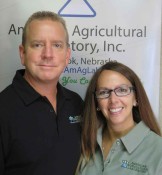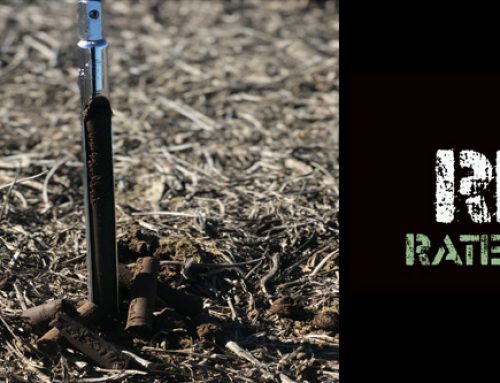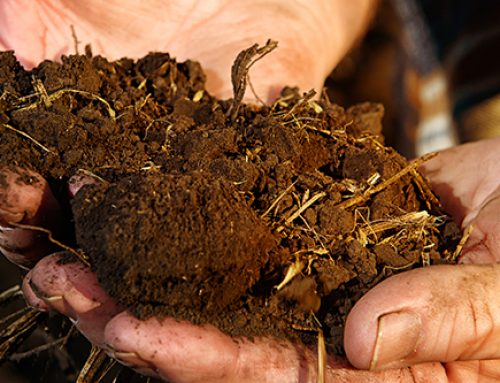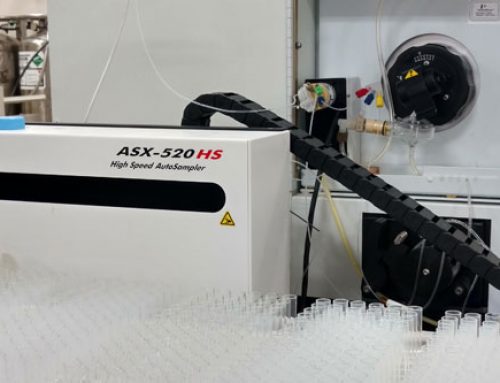Zinc (Zn) is a micronutrient critical for proper growth and development in plants. Although we do not fully understand zinc’s specific role, it is certain that zinc is involved in the production of chlorophyll, protein, and various enzymes involved in metabolic reactions for proper growth. Crops that are most prone to zinc deficiency are grain sorghum, soybeans and corn. Wheat, sugar beets, and edible beans can also show a positive response to zinc fertilizer when it is deficient in the soil.
With a variety of zinc products on the market, how do farmers know which product is the right fit for their needs? We had the chance to talk with Kevin Grooms with American Agricultural Laboratory (previously Olsen Laboratory) to answer this and other zinc questions.
Can you tell us about different zinc fertilizer options?
Zinc sulfate, ammoniated zinc, and chelated zinc are three fertilizer options. Sulfates are the most commonly applied inorganic zinc fertilizer. Zinc sulfate is a granular product that may be banded or broadcast. There are two forms of zinc sulfate:
- Zinc monohydrate with 36% zinc
- More commonly used due to availability, higher zinc content per pound and lower water content resulting in lower transportation costs.
- Zinc heptahydrate with 22% zinc.
Zinc ammonia complexes are typically found in starter fertilizers. They work well in liquid blends made from ammonium phosphate. Specific ammoniated zinc solutions can also be mixed with UAN or aqua ammonia solutions.
Chelated zinc is another liquid product. It is the most common soil-applied organic source of zinc. It can be banded, broadcast, or foliar-applied with application rates up to one fifth (?) less than inorganic sources. It is the least likely of the options to be fixed in high pH, calcareous soils. Chelated zinc is also the most expensive option.
Chelated zinc sounds like the most efficient choice. Is that an accurate assumption?
Not necessarily. Several factors influence the effectiveness of zinc in products such as
- solubility of the product
- application rate and method
- soil conditions
- crops’ sensitivity to zinc deficiency
For example, when compared to inorganic zinc sources, university research has shown chelated zinc products have the greatest efficiency when broadcast to deficient soils at very low rates. But, when applied as a starter band with ammonium phosphate, both inorganic and chelates perform equally well at higher rates. Applying only chelated products at low rates typically will never result in higher zinc levels in the soil. Some of the more affordable products, such as the dry zinc sulfate products can be applied at rates that can raise soil test values, and correct Zn deficiencies for longer periods of time.
How available are the different products to the plant after application?
This goes back to the solubility of the product. Zn fertilizers are primarily taken up by the roots as Zn++ cation from the soil solution. Therefore, the higher the solubility, the higher the initial availability of the product is to the plant. Both sulfates and chelates are very water soluble, but again, chelates are not prone to soil fixations in higher pH soils.
Zinc deficiencies tend to result from:
- High pH and calcareous soil
- Low organic matter, such as sandy or eroded soil
- Wet, cold soil conditions that cause roots to develop slowly and soil to slowly release the Zn from organic matter.
- Crops susceptible to zinc deficiencies in soils that test low in zinc
By understanding your soil conditions and how the crop will respond to zinc fertilizer, you will be able to apply the proper product at the proper time. There are options for correcting a zinc deficiency. This starts with a proper soil test. A correct analysis of field conditions and crop to be grown, cost of product, and application methods will help you determine the best zinc source for your crop.
Kevin Grooms started at Olsen’s Agricultural Laboratory as a soil and feed chemist in 1987. After five years, he was promoted to laboratory manager, trained under Dr. Bob Olsen and developed his skills to evaluate soil, plant and feed results in relation to production.
Olsen’s Agricultural Laboratory has been serving the Agricultural community for 38 years. Kevin and his wife, Christine, are starting their eighth year as owner/operators. Looking to the future, they decided it was time to change the name of the lab to reflect the company’s growth and nationwide foot print. Due to the increase in the areas of the country serviced, and because of their strong commitment to the advancement of agricultural and food production in this country, they chose the name “American Agricultural Laboratory”.





